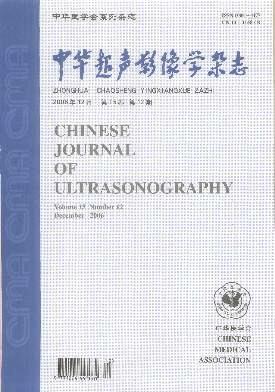利用时空图像相关数据进行胎儿心脏三维打印的可行性
Q4 Medicine
引用次数: 0
摘要
目的探讨利用时空图像相关(STIC)体渲染数据3D打印胎儿心脏的可行性。方法前瞻性入选2019年2 - 5月武汉大学人民医院二维超声心动图诊断的8例心脏正常胎儿和3例心脏异常胎儿。所有胎儿均行二维超声心动图和STIC技术检查。利用Mimics软件对胎儿心脏三维体图像进行后处理,生成标准镶嵌语言格式(STL)的胎儿心脏图像。将STL文件输出到3D打印机,得到胎儿心脏和大血管的3D打印模型。在此过程中,分别从3D数字模型、3D打印模型和常规超声心动图上测量胎儿心脏各指标的数值。通过将模型的实测值与源数据的实测值进行比较,评估三维建模的精度。结果所有胎儿心脏的STIC体积数据均被成功地重新处理并打印出来,能直观地显示胎儿心脏的解剖结构和血管走行。3D数字模型、3D打印模型与常规超声心动图的心脏尺寸参数比较,差异均无统计学意义(P < 0.05)。此外,两种方法的大小参数一致性较好,所有数据点都在一致的范围内。结论以STIC容积图像为数据来源进行胎儿心脏3D打印是可行的。关键词:三维打印;时空图像相关;先天性心脏病;胎儿本文章由计算机程序翻译,如有差异,请以英文原文为准。
Feasibility of three dimensional printing of the fetal heart using spatio-temporal image correlation data
Objective
To investigate the feasibility of three dimensional(3D) printing fetal heart from spatio-temporal image correlation (STIC) volume-rendered data.
Methods
Eight fetuses with normal heart and 3 fetuses with confirmed cardiac anomalies identified by two-dimensional echocardiography from February to May 2019 in Renmin Hospital of Wuhan University were prospectively enrolled in this study. All the fetuses underwent two-dimensional (2D) echocardiography and STIC technology examination. The 3D volume images of fetal heart were post-processed by Mimics software to create images of the fetal heart in standard tessellation language format(STL). The STL file was output to the 3D printer and the 3D printing models of fetal heart and great vessels were obtained. In the process, the numerical values of each index of fetal hearts were measured from 3D digital model, 3D printing models and routine echocardiography images, respectively. The accuracy of 3D modeling was assessed by comparing the measured values of the model with the measured values of the source data.
Results
In all the fetuses, STIC volume data of the fetal heart were successfully reprocessed and printed out, the anatomical structure and vascular course could be visually displayed. It showed no significant difference in all the heart size parameters between 3D digital model, 3D printing models and routine echocardiography images (all P>0.05). Moreover, the size parameters were concordant well between the two methods, all of the data points fell within the limits of agreement.
Conclusions
The 3D printing of fetal heart using STIC volume images as the data source is feasible.
Key words:
Three dimensional printing; Spatio-temporal image correlation; Congenital heart disease; Fetus
求助全文
通过发布文献求助,成功后即可免费获取论文全文。
去求助
来源期刊

中华超声影像学杂志
Medicine-Radiology, Nuclear Medicine and Imaging
CiteScore
0.80
自引率
0.00%
发文量
9126
期刊介绍:
 求助内容:
求助内容: 应助结果提醒方式:
应助结果提醒方式:


